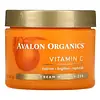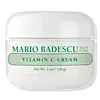What's inside
What's inside
 Key Ingredients
Key Ingredients

 Benefits
Benefits

 Concerns
Concerns

 Ingredients Side-by-side
Ingredients Side-by-side

Aloe Barbadensis Leaf Juice
Skin ConditioningGlycerin
HumectantCoconut Alkanes
EmollientDiheptyl Succinate
EmollientCetearyl Olivate
Sorbitan Olivate
EmulsifyingCapryloyl Glycerin/Sebacic Acid Copolymer
Skin ConditioningXanthan Gum
EmulsifyingAscorbyl Glucoside
AntioxidantCitrus Aurantifolia Oil
CleansingCitrus Aurantium Bergamia Fruit Oil
MaskingCitrus Aurantium Dulcis Peel Oil
MaskingCitrus Nobilis Peel Oil
MaskingCitrus Paradisi Peel Oil
MaskingCurcuma Longa Root Extract
MaskingGlycyrrhiza Glabra Root Extract
BleachingSilybum Marianum Extract
Skin ConditioningTerminalia Ferdinandiana Fruit Extract
AntioxidantAscorbic Acid
AntioxidantTetrahexyldecyl Ascorbate
AntioxidantTocopherol
AntioxidantAlgin
MaskingBeta-Glucan
Skin ConditioningCalcium Ascorbate
AntioxidantCoco-Caprylate/Caprate
EmollientSqualane
EmollientBenzoic Acid
MaskingPotassium Sorbate
PreservativeSodium Benzoate
MaskingSorbic Acid
PreservativeLimonene
PerfumingLinalool
PerfumingAloe Barbadensis Leaf Juice, Glycerin, Coconut Alkanes, Diheptyl Succinate, Cetearyl Olivate, Sorbitan Olivate, Capryloyl Glycerin/Sebacic Acid Copolymer, Xanthan Gum, Ascorbyl Glucoside, Citrus Aurantifolia Oil, Citrus Aurantium Bergamia Fruit Oil, Citrus Aurantium Dulcis Peel Oil, Citrus Nobilis Peel Oil, Citrus Paradisi Peel Oil, Curcuma Longa Root Extract, Glycyrrhiza Glabra Root Extract, Silybum Marianum Extract, Terminalia Ferdinandiana Fruit Extract, Ascorbic Acid, Tetrahexyldecyl Ascorbate, Tocopherol, Algin, Beta-Glucan, Calcium Ascorbate, Coco-Caprylate/Caprate, Squalane, Benzoic Acid, Potassium Sorbate, Sodium Benzoate, Sorbic Acid, Limonene, Linalool
Water
Skin ConditioningGlycerin
HumectantTetrahexyldecyl Ascorbate
AntioxidantCaprylic/Capric Triglyceride
MaskingDicaprylyl Carbonate
EmollientCetearyl Alcohol
EmollientAscorbyl Tetraisopalmitate
AntioxidantGlyceryl Stearate Se
EmulsifyingBakuchiol
AntimicrobialNiacinamide
SmoothingHydrolyzed Sodium Hyaluronate
Skin ConditioningRosa Canina Seed Oil
EmollientSimmondsia Chinensis Seed Oil
EmollientGlycyrrhiza Glabra Stem Extract
Skin ConditioningHelianthus Annuus Seed Oil
EmollientSodium Hyaluronate
HumectantBeta-Carotene
Skin ConditioningDaucus Carota Sativa Root Extract
Skin ConditioningDaucus Carota Sativa Seed Oil
EmollientAscorbyl Palmitate
AntioxidantPhenoxyethanol
PreservativeHydroxyethyl Acrylate/Sodium Acryloyldimethyl Taurate Copolymer
Emulsion StabilisingBehenyl Behenate
EmollientSodium Polyacryloyldimethyl Taurate
Emulsion StabilisingAmmonium Acryloyldimethyltaurate/Vp Copolymer
Citric Acid
BufferingBHT
AntioxidantChlorphenesin
AntimicrobialSodium Sulfite
PreservativeIsohexadecane
EmollientParfum
MaskingPolysorbate 60
EmulsifyingSodium Chloride
MaskingSodium Sulfate
CI 14700
Cosmetic ColorantWater, Glycerin, Tetrahexyldecyl Ascorbate, Caprylic/Capric Triglyceride, Dicaprylyl Carbonate, Cetearyl Alcohol, Ascorbyl Tetraisopalmitate, Glyceryl Stearate Se, Bakuchiol, Niacinamide, Hydrolyzed Sodium Hyaluronate, Rosa Canina Seed Oil, Simmondsia Chinensis Seed Oil, Glycyrrhiza Glabra Stem Extract, Helianthus Annuus Seed Oil, Sodium Hyaluronate, Beta-Carotene, Daucus Carota Sativa Root Extract, Daucus Carota Sativa Seed Oil, Ascorbyl Palmitate, Phenoxyethanol, Hydroxyethyl Acrylate/Sodium Acryloyldimethyl Taurate Copolymer, Behenyl Behenate, Sodium Polyacryloyldimethyl Taurate, Ammonium Acryloyldimethyltaurate/Vp Copolymer, Citric Acid, BHT, Chlorphenesin, Sodium Sulfite, Isohexadecane, Parfum, Polysorbate 60, Sodium Chloride, Sodium Sulfate, CI 14700
Ingredients Explained
These ingredients are found in both products.
Ingredients higher up in an ingredient list are typically present in a larger amount.
Glycerin is already naturally found in your skin. It helps moisturize and protect your skin.
A study from 2016 found glycerin to be more effective as a humectant than AHAs and hyaluronic acid.
As a humectant, it helps the skin stay hydrated by pulling moisture to your skin. The low molecular weight of glycerin allows it to pull moisture into the deeper layers of your skin.
Hydrated skin improves your skin barrier; Your skin barrier helps protect against irritants and bacteria.
Glycerin has also been found to have antimicrobial and antiviral properties. Due to these properties, glycerin is often used in wound and burn treatments.
In cosmetics, glycerin is usually derived from plants such as soybean or palm. However, it can also be sourced from animals, such as tallow or animal fat.
This ingredient is organic, colorless, odorless, and non-toxic.
Glycerin is the name for this ingredient in American English. British English uses Glycerol/Glycerine.
Learn more about GlycerinTetrahexyldecyl Ascorbate (THD) is a stable and oil-soluble form of Vitamin C.
THD is special in that it has the ability to travel deeper into skin than traditional ascorbic acid while maintaining the same skin benefits (double win!).
Because it’s oil-soluble, THD dives deep into your skin’s fatty layers (think ceramides and cholesterol) to fight off the kind of free radicals that mess with your skin barrier. This makes it a great pair with water-based vitamin C (ascorbic acid) that mainly works on the surface.
Even at just 0.1%, THD is already showing great antioxidant activity. When used up to 2%, it helps keep your skin happy and calm, especially when it’s stressed from pollution or sun.
Want to fade dark spots or tackle hyperpigmentation? You’ll want 5% or more. Pairing it with brightening buddies like niacinamide or licorice root gives even better results. One study even used 30% THD with other brighteners and saw real results on stubborn discoloration, even in melasma-prone skin.
A note on THD: It’s has a slightly silky, oily texture and usually shows up colorless or pale yellow (though the exact shade can vary by supplier).
While you can sneak it into water-based formulas, it really shines when paired with silicones or oils, which help your skin soak it up better.
THD is pretty stable, but it’s still vulnerable to degradation like ascorbic acid. Too much light or heat (above 113°F / 45°C) can break it down over time. Go for dark and opaque packaging that keeps it safe and shady!
Read more about other types of Vitamin C:
Learn more about Tetrahexyldecyl Ascorbate